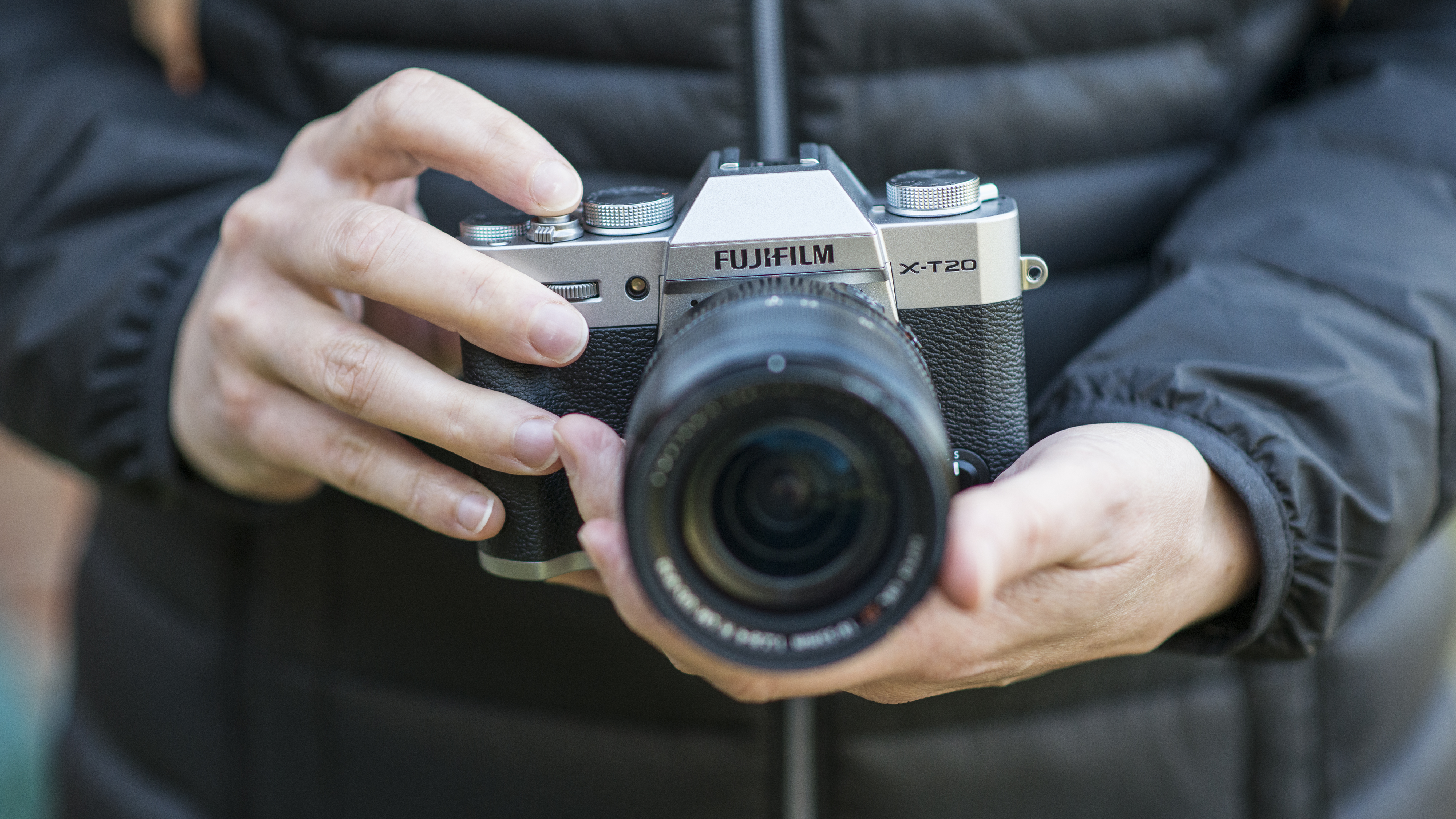TechRadar Verdict
The X-T2 is one of our favourite cameras at the moment, and with the X-T20 Fujifilm has managed to distill many of these key features into a slightly more compact and affordable camera that's likely to hit the sweet spot for many photographers.
Pros
- +
Rich and detailed images
- +
Tactile controls
- +
Excellent handling
- +
Advanced AF system
- +
Film simulation modes
Cons
- -
Limited touchscreen control
- -
EVF magnification
- -
Battery life could be better
Why you can trust TechRadar
Just as when it followed up the X-T1 with the X-T10, Fujifilm has taken a lot of the good stuff from the X-T2 and packaged it in a lighter, more affordable body to give us the X-T20.
Rather than leaving a 16-month gap between launching the two cameras as it did with the X-T1 and X-T10 though, Fujifilm has hardly missed a beat, announcing the X-T20 just over four months after the X-T2.
So should X-T2 owners now be kicking themselves over their purchase, or are there enough differences to separate the two?
Features
- APS-C X-Trans CMOS III sensor, 24.3MP
- Touchscreen control
- High-resolution electronic viewfinder
Just as we’ve seen with the X-Pro2 and X-T2, the X-T20 incorporates Fujifilm’s latest 24.3MP X-Trans CMOS III APS-C sensor. It delivers a significant boost in resolution from the X-T10’s 16.3MP sensor, and brings the new camera in line with pretty much most of its competitors.
Sensor: 24.2MP APS-C CMOS
Lens mount: Fujifilm X-mount
Screen: 3.0-inch tilt-angle touchscreen, 1,040,000 dots
Burst shooting: 8fps
Autofocus: 325-point AF
Video: 4K
Connectivity: Wi-Fi and Bluetooth
Battery life: 350 shots
Weight: 383g
The ISO range gets a boost as well, with a native sensitivity range of ISO200-12,800, compared to ISO200-6,400 on the X-T10, and while the expanded range stretches to the same sensitivity limits of ISO100-51,200, there’s some welcome news here too – unlike on the X-T10, where the expanded range was restricted to JPEG-only files, the X-T20 allows you to shoot raws as well JPEGs at this expanded range.
The X-T20 sticks with the same 2.36 million-dot OLED electronic viewfinder as we saw on the X-T10. Interestingly, while the resolution matches that of the EVF used in the X-T2, the magnification isn’t quite as impressive, at 0.62x compared to 0.77x, and not quite a match for the Lumix G80/G85’s 0.74x magnification.


While the X-T2 did away with a touchscreen interface at the rear – at the time Fujifilm believed, after feedback from users, that there wasn’t a demand for it – it seems to have had a bit of a change of heart for the X-T20.
The X-T20’s 3.0-inch touchscreen doesn’t quite offer the same breadth of control as, say, the one on the Canon EOS M5 or G80/G85 though, limiting you as it does to tapping the display to acquire focus and trigger the shutter, in addition to pinching to zoom when reviewing images; if you’re hoping to be able to toggle and adjust controls on the rear display you’ll be left disappointed.
The X-T20 sticks with the same 2.36 million-dot OLED electronic viewfinder as we saw on the X-T10
Resolution receives a boost over the X-T10, increasing from 920k-dots to 1.04m-dots, matching that of the X-T2. Unlike the X-T2, the X-T20’s display doesn’t take advantage of Fuji’s double-jointed design, but the mechanism still allows you to pull the display outwards for waist-level shooting, and downwards should you want to use the camera raised aloft.
The X-T20 also comes equipped with Fujifilm’s X-Processor Pro imaging engine, which sees it spring into life a little quicker than the X-T10 at 0.4 seconds, while the shutter lag has been reduced to 0.05 seconds.
There’s just a single SD card slot on the X-T20, compared to the X-T2’s two, while it doesn’t support UHS-II cards.
The X-T20 offers 4K video capture (3840 x 2160) at 30p as well as Full HD (1920 x 1080) at 60p, both of which support film simulations as well. There’s an input for a microphone, but not for audio monitoring.
Phil Hall is an experienced writer and editor having worked on some of the largest photography magazines in the UK, and now edit the photography channel of TechRadar, the UK's biggest tech website and one of the largest in the world. He has also worked on numerous commercial projects, including working with manufacturers like Nikon and Fujifilm on bespoke printed and online camera guides, as well as writing technique blogs and copy for the John Lewis Technology guide.
